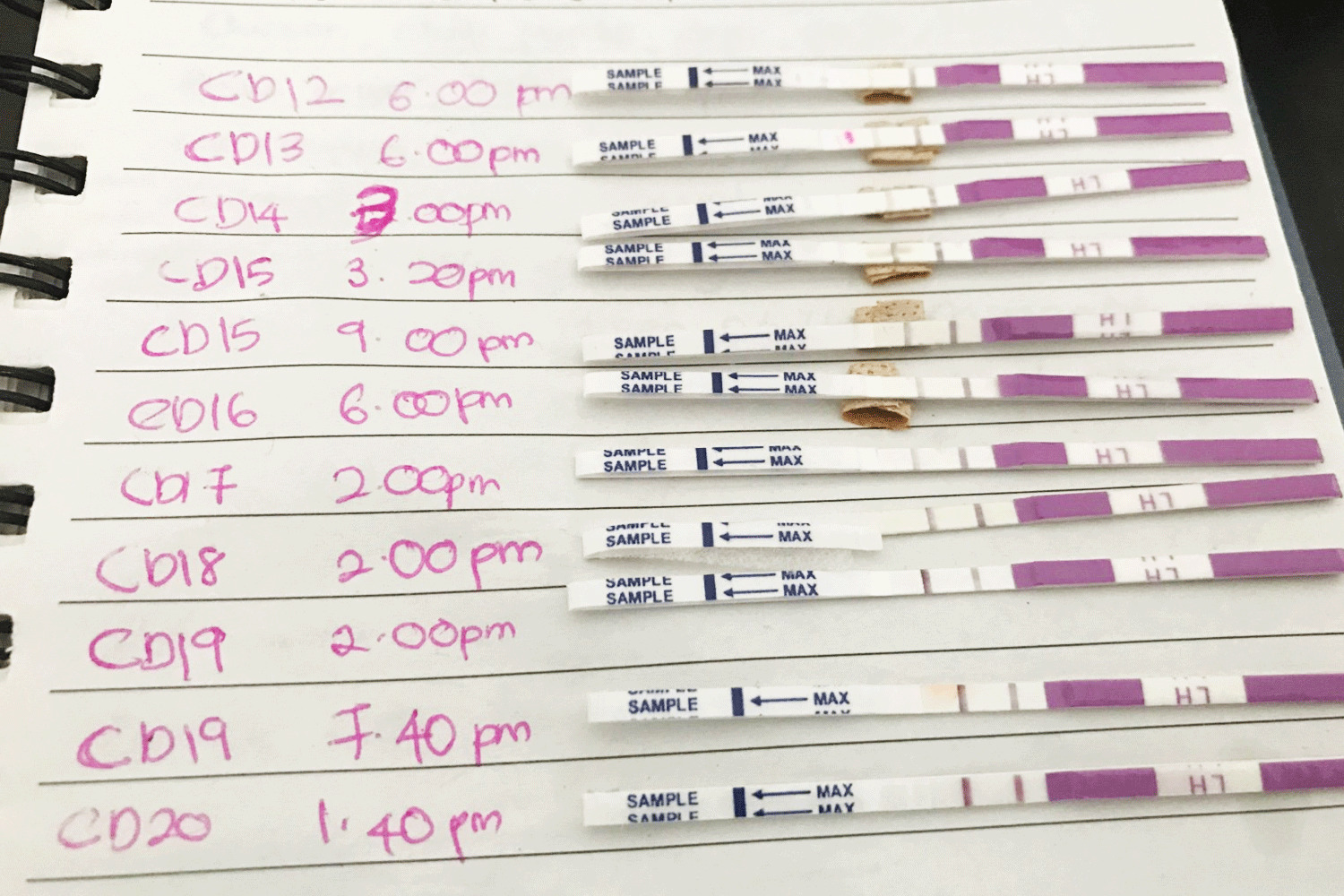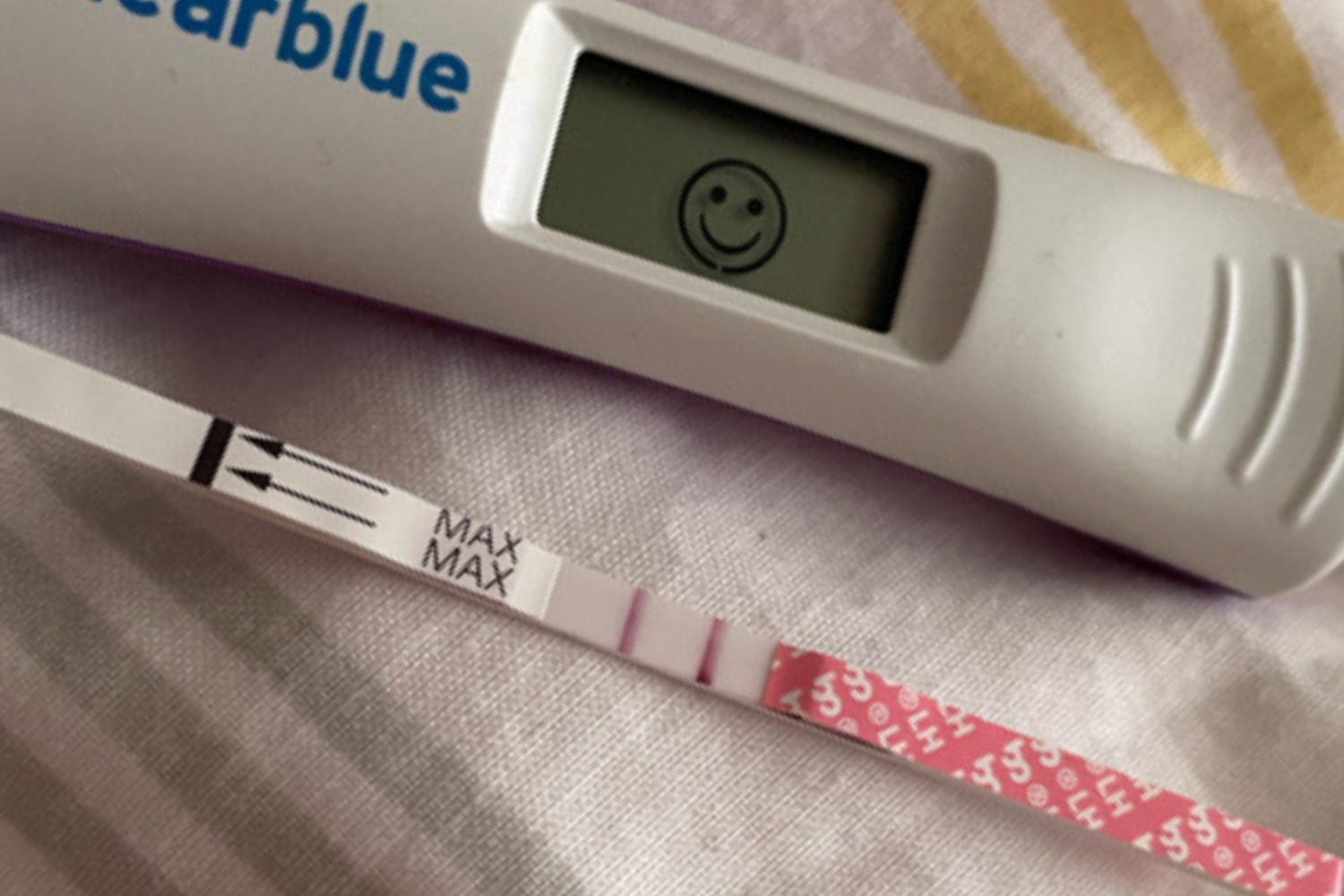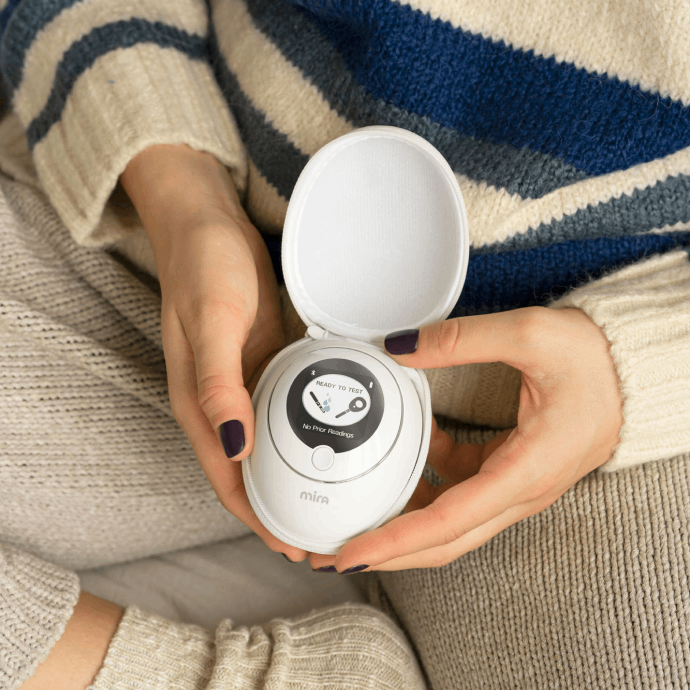What Does a Positive Ovulation Test Look Like? (7 Examples)
If you are trying to conceive, you know just how important it is to track the most fertile days of your cycle (i.e. your LH surge and the day of ovulation). The most common ways to do this include tracking your basal body temperature (BBT), monitoring your cervical mucus, and/or testing your LH levels with an ovulation predictor kit (often called an OPK).

What does a positive ovulation test look like?
What does a positive ovulation test mean?
Positive ovulation test examples
What can influence a positive ovulation test?
About OPKs
In this post, we will focus on ovulation testing and OPKs specifically, shedding light on what a positive ovulation test means, what a positive result looks like in the real world, and what can potentially influence an ovulation test’s results. We’ll also follow up by answering some of the most frequently asked questions about ovulation tests and OPKs.
What does a positive ovulation test look like?
What your positive ovulation test looks like can vary depending on which brand of test that you use (check our guide to the 9 best ovulation tests here).
The most common type of test is a standard paper test strip that displays two lines once a urine sample is taken. The lines are typically pink in color, however, some tests have lines that are either gray or blue.
Regardless of the color, if this type of paper test is positive, both the control line and the test line should look exactly the same in color and intensity. The test line can also be darker than the control line in order to be considered positive. However, if the test line is lighter in color than the control line, this is not considered a positive result.
There are also other ovulation tests out there that can display your result digitally. However, instead of two lines, the test will display either a smiley face or the word “yes”. Digital tests are often more expensive than paper tests. However, many women prefer these tests because they like to receive a clear yes or no answer.
What does a positive ovulation test mean?
If your ovulation test is positive, this means that your LH levels are above the threshold considered to be “surging” – meaning that ovulation will likely happen within 24-36 hours.
At rest, typical LH levels for women are between 5-25 IU/L, and during the LH surge, they can peak up to 100+ IU/L. The most common and reliable threshold for ovulation testing is between 25-30 IU/L. This means that if your LH levels are above this threshold, the result of your ovulation test should be positive.
Positive ovulation test examples
There are several different brands of ovulation tests and OPKs out there. To help you get a feel for how these tests work and what a positive result looks like, here are a few examples.
Natalist

In this blog article from Natalist, eight different women shared images of their Natalist brand ovulation test results over a period of 7-10 days.
For this type of ovulation test, the control line is clearly marked with a “C” and the test line is marked with a “T”. When looking through these pictures, you can easily see that the test line is typically much lighter or nonexistent compared to the control line for the first few tests, before getting darker on the days where LH is surging.
Netmums

In a thread on the popular pregnancy and parenting forum, Netmums, user Abiraami H shares 10 days worth of ovulation test results. Although the brand name of this test is unknown, the type of test is similar to other OPKs where the control line maintains the same level of darkness and the darkness level of the test line varies.
In this individual case, LH levels would be considered surging on days 19 and 20 of the cycle.
Premom

In another blog article from the Premom app, you can see a diagram of what a typical OPK testing scenario might look like over a period of eight days. In this image, the test line is visibly darker on day 15, indicating that LH levels surged on this day of the cycle.
Pregnancy Forum

In a thread on the Pregnancy Forum website, user Mariexo shared an image of her Clearblue ovulation test. Unlike traditional OPKs, this type of test from Clearblue does not show the control and test lines, but instead displays a simple happy face when LH levels are elevated.
What to Expect

In the “Trying to Conceive” community at What to Expect, another user shared her positive ovulation test. In this example, you can clearly see that the test line is as dark as the control line, meaning that LH is surging.
Health Unlocked

In this post on the Health Unlocked, another user showed her positive ovulation test result. In this test from Boots, the control line is in the circle and the test line is in the square. Because the test line (the line in the square) is as dark as the control line, this is a good indicator that LH levels are heightened.
Glow

In some cases, it is helpful to use both a digital Clearblue test and a traditional test at the same time. In a thread on Glow, Emma shares her positive Clearblue smiley face next to a test strip with two dark lines.
What can influence a positive ovulation test?
Even though ovulation tests can be up to 99% accurate, there is still a risk of getting a false-positive result. This could be due to a number of influential factors such as:
- Timing – for example, taking your test too early or too late in your cycle.
- Hormonal imbalance – for example, if you have polycystic ovary syndrome (PCOS) or if you have recently been pregnant or breastfeeding.
- Certain medications – for example, birth control pills and fertility medications.
There is also the possibility that perhaps the test was not taken correctly. If you have never used an OPK before, make sure to read the instructions thoroughly. As you continue to test over several cycles, you will get a better feel for when and how to test.
About ovulation tests (OPKs)
Here’s an overview of how OPKs work, the different types of OPKs available, and how to interpret your results. We’ll also take a look at the reliability of OPKs and best practices for using them at home.
How do they work?
An ovulation predictor kit (OPK) is a type of at-home hormone test that detects the presence of LH (luteinizing hormone) in urine. If LH levels are elevated, the test will reveal either a line, happy face, or the word “yes”. This indicates that your LH levels are considered “surging” and that ovulation is likely to occur within the next 24-36 hours.
The experience of using an OPK is very similar to taking a pregnancy test. Typically, all you must do is collect a urine sample, dip the test stick into the urine sample, and wait a few minutes until your results are ready.
Bear in mind that each brand of OPK is different. Before taking your test, always make sure to read and follow the instructions to receive the best results.
How do you read an OPK and interpret the results?
Interpreting the results of your OPK may vary depending on the type and brand of OPK that you are using. For example, some brands will give you a straightforward result such as a smiley face or a yes/no answer. This result is easy to interpret as confirmation that your LH levels are likely to be surging.
On the other hand, more traditional OPKs work by using the two-line system (similar to a pregnancy test). Here is how they work:
- The first line of your OPK test is the control line, and it is there to let you know that the test is working properly with the urine sample that it was given.
- The second line is considered the results or “test” line, and it will let you know whether or not your LH levels are surging.
If the results line is as dark or darker than the control line, this is an indicator that your LH levels are elevated. If the result line is faint in color or lighter than the control line, this indicates that LH was detected, but is not high enough to be considered surging.
What kinds of tests are there?
There are a number of different types of ovulation tests and OPKs out there.
When testing at home, the most cost-effective option is a standard ovulation test strip kit. This type of test will display your results as two lines, and you can interpret your results based on how dark your test line is. Another type of at-home test kit is a digital OPK test. With this test, you will receive either a yes or no answer in the form of a smiley face or the words “yes” or “no”.
While traditional OPKs and at-home ovulation test kits can give you insight into whether or not your LH levels are surging, they cannot tell you what your exact LH levels are. Hormone tracking systems like Mira are a great option for monitoring LH throughout your entire cycle, so that you can easily identify your personal baseline LH levels and surges.
In addition to at-home test kits, you can also test for LH at your doctor’s office with a standard blood test. However, unlike Mira or OPKs where you receive an instant result, it may take a day or two for the lab to analyze and communicate your results to you.
Are ovulation tests reliable?
According to the American Pregnancy Association, ovulation tests are approximately 99% accurate at identifying the LH surge when used correctly.
To reduce your risk of getting a false-positive result, consider the following tips:
-
- Always read the instructions. Not all OPKs are the same, and you should always make sure to read the instructions thoroughly and carefully before using an OPK.
- Start at the right time in your cycle. For the majority of women, there is no need to test for LH every day of your cycle. Instead, aim to begin testing a few days before your anticipated day of ovulation and conclude testing once your LH surge has been identified.
- Test at the same time each day. Your body’s hormone levels can vary throughout the day. To receive the most accurate results, try to take your LH test at the same time each day.
- Limit liquid intake 3-4 hours before taking a test. Too much liquid in your body may dilute the concentration of LH in your urine. To prevent this from happening, try to limit your intake of liquids at least 2 hours before you plan to take a test.
- Try a hormone-tracking system like Mira. OPKs only give you a very limited amount of information regarding your LH levels. However, with a hormone tracking system like Mira, you can track and monitor your exact LH levels, so that you can get to know your cycle better and identify your LH surge with more accuracy.
- Be patient with your body. Last but not least, tracking your hormones and predicting ovulation can get tedious and frustrating – especially if you are not receiving the results that you are looking for. Remember to be patient with your body during this time, and it may take a few cycles until you get the hang of using an OPK.

It’s also important to note here that although OPKs are great at revealing if LH levels are surging, they cannot be used to confirm whether or not ovulation actually happens following the LH surge. Therefore, for those experiencing polycystic ovarian syndrome (PCOS) or Luteinized Unruptured Follicle Syndrome (LUFS), OPKs may not be the most reliable option for predicting ovulation.
Mira’s Editorial Process
All content produced by Mira meets stringent editorial standards, ensuring excellence and accuracy in language and medical precision. Every piece undergoes thorough fact-checking and review by qualified professionals. Check out our full editorial process to learn more.








